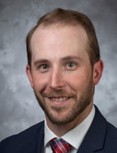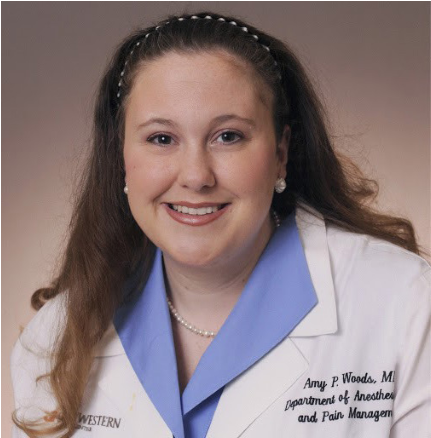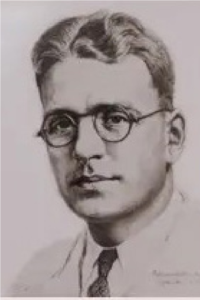VOLUME 37, ISSUE 1

Cody S. McCarty, D.O.
Staff Physician
Hendrick Health
Abilene, TX

Russell K. McAllister, M.D., FASA
TSA Secretary and Editor-in-Chief
Professor and Chair of Anesthesiology
Baylor Scott & White Health-Central Texas
Baylor College of Medicine -Temple
Temple, TX

Amy P. Woods, M.D., FASA
TSA Chair History Committee and Newsletter History Editor
Associate Professor of Anesthesiology
Department of Anesthesiology and Pain Management
The University of Texas Southwestern Medical Center-Dallas
Dallas, TX
On the Shoulders of Giants: Legends of Texas Anesthesiology:
Chauncey D. Leake, PhD
Chauncey Depew Leake, born on September 5, 1896 in Elizabethtown, New Jersey, was a pioneering pharmacologist whose contributions revolutionized anesthesia and pharmaceutical research. Dr. Leake was a Ph.D. scientist in pharmacology and toxicology who is most famous for his discovery of divinyl ether as an inhaled anesthetic agent. Among the titles used to describe Dr. Leake included chemist, pharmacologist, physiologist, administrator, writer, poet, editor, historian, philosopher, and orator.
Raised in rural New Jersey, he suffered from severe visual impairments as a young child. Of note, at age 10, he was noted to be severely visually impaired (astigmatism) and was treated by famed Austrian ophthalmologist, Karl Koller (who is notable in our field for introducing cocaine as an anesthetic for eye surgery). Leake subsequently recovered his vision and completed his schooling. He then attended Princeton University (alongside famed author F. Scott Fitzgerald), obtaining a bachelor’s degree in Chemistry, Biology, and Philosophy in 1917. When the United States was thrust into the First World War, Dr. Leake enlisted in the New Jersey National Guard. Initially serving in a machine gun training company in Alabama, he rose to the rank of sergeant prior to being transferred to the newly formed Chemical Warfare service at the University of Wisconsin in Madison(1). It was here that he studied the pharmacology and toxicology of war gases, work that would eventually shape his career. He received a master’s degree in 1920 followed by doctorate (Ph.D.) degree in 1923 in Pharmacology and Physiology from the University of Wisconsin. Dr. Leake then stayed on as faculty at the University of Wisconsin from 1923 to 1928(2). Dr. Leake’s tenure at the University of Wisconsin briefly overlapped that of Dr. Ralph Waters, who would eventually go on to establish the first academic department of anesthesiology in the United States. This department was built on the foundation of research in the field of anesthesiology.
Early in his years at the University of Wisconsin, he would meet his wife and life partner, Elizabeth Wilson, a microbiologist, whom he married in 1921. Of note, he frequently carried a 1921 silver dollar in his pocket to commemorate the year they were married.
During the war, his main area of research was to study the toxic effects of war gases on the acid base balance in the blood. The so-called “war gases” he studied included chlorine, chlorpicrin, mustard gas, and lewisite. His research included administering these toxic gases to morphinized dogs, he observed an initial increase in respiration and vomiting followed by suppressed respiration leading to mild acidosis. This finding was key, as it led him to ponder how other anesthetic agents might affect the blood (1) and subsequently laid the groundwork for his study of anesthetic agents and the development of divinyl ether. Ethylene had already been introduced into practice as an anesthetic gas with the advantage of causing amnesia while still maintaining a high enough oxygen content to prevent hypoxemia, in contrast to early use of nitrous oxide. This led Dr. Leake to theorize the compound divinyl ether. However, he did not have the resources to fully explore this theory until he had moved to the University of California. He actually based his theories of the utility of the divinyl ether as an anesthetic based on the projected chemical properties of the drug prior to it having been formulated. With the help of some organic chemistry colleagues who were able to synthesize the drug, he was then able to use this formulation in experiments to verify his theory, which proved that he was correct in the pharmacologic effects of this new drug.
His time at the University of Wisconsin concluded in 1927 following a proposition from Carl L. A. Schmidt, a professor of biochemistry at the University of California at Berkeley, to join the faculty and teach pharmacology to second-year medical students. Initially intended to be a short stay, it led to over a decade of innovation and research. He was eventually recruited by William Wallace Campbell, the president of the Medical School and the University of California, to become a permanent professor (1). He established their Department of Pharmacology in 1928 (2). It was here, with the help of his pharmacology fellow Peter Knoefel and Mei-Yu Chen, that he continued his work on divinyl ether and other unsaturated ethers. During this time, he was able to prove that divinyl ether had many beneficial properties, including fast induction with minimal toxicities, just as he had hypothesized. It was placed into clinical use in 1933, but was found to be highly flammable, hepatotoxic after prolonged exposure, and extremely potent, making it difficult not to enter a deep plane of anesthesia (5). It was often used for induction of anesthesia due to its rapid onset and then exchanged for ethyl ether because depth of anesthesia was more difficult to manage with divinyl ether. Despite these drawbacks, these findings laid the groundwork for further testing and experimenting with new anesthetic agents.
While in California, in addition to divinyl ether, he developed several other therapeutic drugs including carbarsone and iodochlorhydroxyquin for the treatment of intestinal amebiasis; amphetamine and other related sympathomimetics as central nervous system stimulants and nasal decongestants; and nalorphine as a narcotic antagonist (4). He additionally did research on various tranquilizer medications in addition to extensive work in the field of medical ethics. Dr. Leake would eventually leave The University of California in 1942 to pursue a position at the University of Texas Medical Branch (UTMB) in Galveston after an incredible period of innovation.
Once in Galveston, Dr. Leake served as the Executive Vice President and Dean of the medical school from 1942-1955 all while continuing to teach and conduct research in pharmacology. He helped turn UTMB into a thriving medical school, increasing the classes to 120 students twice a year as part of a World War II effort to increase the number of physicians in the United States during this time (1). After the war, he helped develop UTMB as a world class medical institution. He helped plan and build a new hospital (1), recruit new basic science and clinical faculty to Galveston, and supported the expansion of UTMB’s graduate programs. He still remains the only non-medical doctor to have led UTMB in its illustrious history to this day (7). Under his direction he was able to convince the Board of Regents to build a new building specifically for research and encouraged innovation and research at the institution. Also, while serving as an administrator at UTMB, he was instrumental in the creation of the Texas Medical Center in Houston, working in concert with the leaders of MD Anderson Cancer Center in Houston and Baylor College of Medicine, which had just moved from Dallas to Houston. In addition, he worked with the University of Texas System and many remaining physicians in Dallas who had not moved to Houston with Baylor College of Medicine. From those relationships, the University of Texas Southwestern medical center was established in 1943.
Dr. Leake also held many leadership positions within organized medicine including President of the American Society for Pharmacology and Experimental Therapeutics, the American Association for the Advancement of Science, the American Association of the History of Medicine, and several others. Dr. Leake’s legacy was permanently entrenched within the UTMB campus by the establishment of the annual Chauncey D. Leake Distinguished Lectureship, which honors and invites internationally renowned scientists to share their work in the field of pharmacology and toxicology each year. He has a similarly named lectureship at the Ohio State University as well as at the University of California.
Dr. Leake resigned from UTMB in 1956 and, shortly after, pursued a position at Ohio State University Medical School as professor of Pharmacology and assistant dean of the medical school until 1962, where he entered “retirement.” Retirement for Dr. Leake consisted of returning to San Francisco and guiding student research on the mechanisms of anesthesia alongside Robert Featherstone. He was also able to focus more of his time on another passion of his, “writing what I think is worthwhile” (1).
Not only a pharmacologist, he was an avid author and historian. Dr. Leake became interested in the historical and philosophical affairs of medicine during his career in pharmacological advancements. Throughout his life, he authored twelve books and over 600 articles. Two of his most famous literary pieces were “Percival’s Medical Ethics” (1) under the direction of Charles Thomas in 1927, and the first English translation of William Harvey’s landmark work in physiology, “De Motu cordis” (On the Motion of the Heart and Blood), in 1931. He also authored a history book on ether entitled, “Letheon: The Cadenced Story of Anesthesia.” He additionally initiated publication of multiple journals and archives including the University of California Publications in Pharmacology and the internationally distributed Texas Reports on Biology and Pharmacology.
He was a noted lover of theater and was often found working lighting behind the scenes in various productions. On January 11th 1978, during a production at the Bohemian Club theater in San Francisco, Dr. Leake suddenly collapsed. He was found to have suffered a ruptured abdominal aortic aneurysm and he died shortly thereafter. His legacy leaves behind a lasting imprint of research and innovation in the field of pharmacology and anesthesia as well as a rich history of innovation as an educator and administrator. He was preceded in death by his wife, Elizabeth in 1977 and, at the time of his death, was survived by his two sons, Dr. Wilson W. Leake of Seattle, Washington and Chauncey D. Leake, Jr. of New York City (3).
Throughout his career, Dr. Leake continued to push the boundaries of research and pharmacology. It was due to his inquisitive mind, relentless pursuit of understanding, and the ultimate goal of disseminating information that he brought forth many advancements, not only in the practice of anesthesiology, but in the medical community as a whole. His dedication to academics helped train the next generation of pharmacists and physicians and his contributions are substantial and far reaching throughout medicine. By the conclusion of his career, he was said to have given lectures in almost every country in the world (8). An interview with Dr. Leake from 1976 is available from the Texas Medical Center for those who wish to explore his rich history even further (9).
Dr. Leake is truly a giant in the history of Texas medicine and anesthesiology, upon whose shoulders we all stand.

Chauncey D. Leake, Ph.D.; Dean and Executive Vice President-University of Texas Medical BranchGalveston-1942-1955

Dr. Leake delivering a lecture
References:
- https://www.annualreviews.org/docserver/fulltext/pharmtox/16/1/annurev.pa.16.040176.000245.pdf?expires=1714961566&id=id&accname=g uest&checksum=889F6C65168E0E51DC7ED14F7388B914
- https://oac.cdlib.org/findaid/ark:/13030/tf6w1008qz/entire_text/
- https://www.washingtonpost.com/archive/local/1978/01/14/chauncey-d-leake-81-author-professor-of-pharmacology/91a9a8c3-520e-4f0482e6-ce868bb51e6d/
- http://texts.cdlib.org/view?docId=hb4q2nb2nd;NAAN=13030&doc.view=frames&chunk.id=div00040&toc.depth=1&toc.id=&brand=oac4
- https://archive.org/stream/in.ernet.dli.2015.146100/2015.146100.The-Pharmacological-Basis-Of-Therapeutics-Fourth-Edition_djvu.txt
- https://www.utmb.edu/gsbs/about/history-of-gsbs
- https://texashistory.unt.edu/explore/collections/DCDL/
- https://garfield.library.upenn.edu/essays/v3p411y1977-78.pdf
- Leake, Chauncey Depew (1896-1978), “IC084: Interview with Chauncey D. Leake, PhD” (1976). Texas Medical Center Video and Audiovisual Recordings: 1973-1991. 89. https://digitalcommons.library.tmc.edu/historical_av/89/

